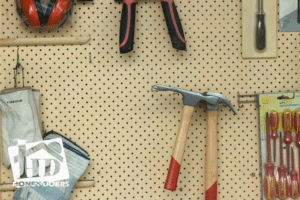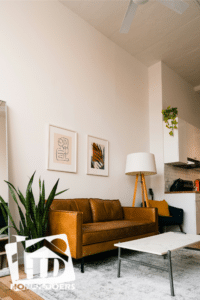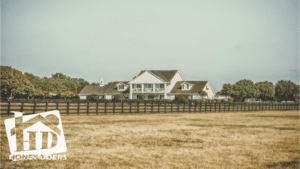No matter how great your interior design skills otherwise are, if you do not provide great lighting, no one will be able to appreciate them. For this reason, the lighting you pick is a vital part of your kitchen design. In 2018, there are some very exciting trends that are currently happening in the kitchen lighting space that anyone thinking of remodeling their kitchen should be aware of.
Soft Gold or Brass Finish
One of the most popular lighting trends right now is the hanging fixture with a soft gold or brass finish. Such fixtures can come in many different shapes and sizes. As gold/brass is a “warm” finish, you should pair it with “warm” colors such as red, yellow, and brown instead of “cool” colors such as blue, green, and violet.
Polished Copper Finish
Another finish that is currently very popular for lighting fixtures as well as furniture and accents is polished copper. With its red hue, polished copper gives a very distinct appearance. People often associate it with new age, steampunk, and rustic modern aesthetics. As with gold and brass, polished copper is a “warm” finish that you should pair with “warm” colors.
Retro Styles
Rustic modern is all the rage in kitchen design right now. We can see this in light fixtures made of wrought iron or weathered wood. Some common styles include a cowboy aesthetic and the “mission” aesthetic, which mimics the style of colonial Spanish metal work. There are also mid-1900s Americana styles, such as the use of repurposed Mason jars or old galvanized cans for light covers.
Another common aspect of retro lighting is the use of old-style Edison lightbulbs – non-frosted, with the filaments visible.
Industrial Styles
A similar yet distinct aesthetic comparable to the retro styles mentioned above is the industrial aesthetic. This look also tends to use the old-style Edison lightbulbs. It also incorporates a lot of dark metal in its fixtures, such as black steel or oil-rubbed bronze. Another common aspect of this style is utilitarian-looking metal cages around the light bulbs. Instead of old galvanized or patina-covered metals, the industrial style tends to use sleek, dark, finished metals shaped in graceful but simple curves.
Art Deco Fixtures
A stylish and distinct light fixture – especially a large modern centerpiece – can really carry the visual stimulation of a kitchen. Such fixtures can come in all shapes and sizes. Common aspects include polished nickel, brass, and copper finishes; suspended fixtures; and soft white shades. Colored shades are common in arrangements that emphasize color blocking.
Uncluttered Arrangements and Clean Lines
There is a certain beauty and strength in simplicity. Whether your fixture is more retro, industrial, or artsy, one aspect of kitchen lighting common in 2018 is definition and a lack of clutter. Designers are utilizing space to draw more attention to accents. They are also minimizing features to focus on definition.
Under-Cabinet Lighting
Another trending practice in kitchens is to place lights under cabinets and other hanging surfaces. This helps to create a soft and intimate environment by delivering light primarily to the places where it is most needed – where you prepare your food.
Use of LEDs
LEDs are becoming cheaper and cheaper. That being the case, homeowners are increasingly using LEDs in their kitchen lighting. LEDs are practical because they use about 10% as much electricity as incandescent bulbs.
From a design perspective, LEDs are great because of the variety of options they give when it comes to color and placement. Unlike incandescent bulbs, which require a shade or cover to create a certain color, you can select LEDs that are of specific colors intrinsically.
Another advantage of LEDs is that they make it relatively easy to install under-cabinet lighting, as the light sources come in such a wide variety of designs.
Large Fixtures
Another current trend is the use of large light fixtures as centerpieces of the kitchen area. This is usually a very decorative piece that encapsulates the entirety of the design aesthetic that the designer is trying to capture in the kitchen. It is common to install such a centerpiece over the island or kitchen table.
Pendants
Pendants are also very common light fixture options in 2018. A pendant is a relatively small fixture, usually of polished metal, that hangs down on a suspended rod or wire. Instead of having just one, designers usually place pendants in groups.
The pendants of a particular group may all hang at the same level. They also may hang at staggered intervals. Both orientations work, depending on what you are trying to achieve. A flat, linear orientation is best when hanging over a rectangular kitchen island, while a concentric group of pendants at staggered levels is best when hanging over a round kitchen table.
Zone Lighting
Zone lighting is when designers divide the room into different zones with different lighting styles. They often use zone lighting in conjunction with pendant lighting. For example, there may be a collection of pendants hanging over the island as well as a dozen or so overhead lights recessed into the ceiling. The benefit of zone lighting is that it creates contrasts and dynamics where lighting would otherwise be solid and monotonous.
Glass Globes
Whether frosted, colored, or transparent, glass globes can create a powerful aesthetic as light fixtures. Designers are currently using them on both main centerpieces and pendants. With their bold simplicity, glass globes draw the attention of the eye without being obtrusive or distracting.
Spotlights
A current trend in cabinet and shelf design is to use open shelves and cabinets with glass doors. Homeowners use these areas to showcase their more aesthetically pleasing kitchen items, such as fine glass or ceramics.
Designers reinforce the effect of open shelves and glass-door cabinets by placing spotlights above the shelves. These spotlights draw attention to the items placed there – which was obviously the intention – without creating an excessive amount of light in the room. They also play an important role in the dynamics of zone lighting.



